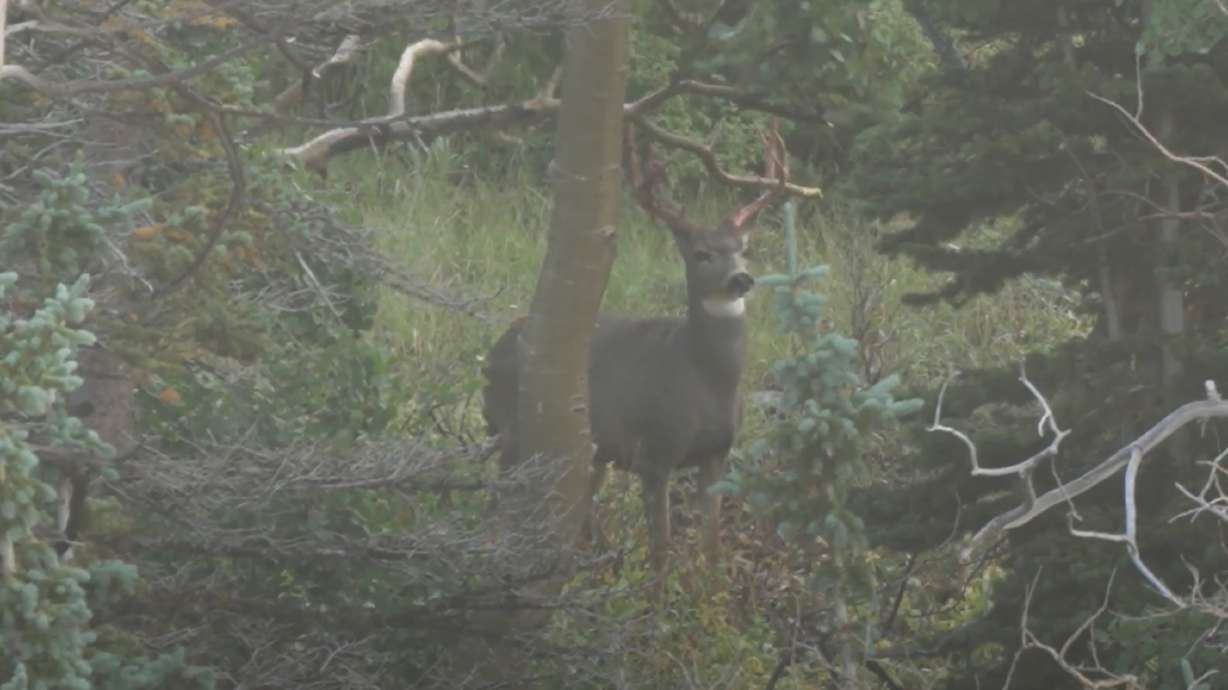Estimated read time: 4-5 minutes
This archived news story is available only for your personal, non-commercial use. Information in the story may be outdated or superseded by additional information. Reading or replaying the story in its archived form does not constitute a republication of the story.
SALT LAKE CITY — While some of Utah's deer hunts have come and gone this fall, the state's general-season buck deer hunt with any legal weapon starts on Saturday.
And many hunters seem to be asking, where have all the deer gone? At least that was the sentiment as members of the Utah Legislature's Natural Resources, Agriculture and Environment Interim Committee met last week and heard an update on the state's deer population management.
"Over the past few years, I've had a lot of constituents, sportsman (and) hunters that have really complained about the number of deer population," said Rep. Rex Shipp, R-Cedar City.
Utah's deer decline
It's no secret that Utah's deer populations are down, and there were fewer deer hunting permits issued this year as state wildlife officials seek to adjust the number of deer in the state.
Utah wildlife biologists estimate there were about 335,000 deer in the state at the time of their regular survey at the end of 2022. Their estimate is much better than two years prior, but almost 70,000 below the state's deer population objective and tens of thousands of deer below where populations were in 2015.
Justin Shirley, director of the Utah Division of Wildlife Resources, explained to the committee that drought is a leading factor as to why that's the case. It's also why other states in the region have dealt with deer population declines in recent years, as well.
"Mule deer decline has been a West-wide issue," he said, pointing to other significant declines in neighboring states. "Utah is no exception to that."
Experts have routinely pointed to drought as a major indicator of deer health in recent years. There is often less food available for deer to forage in dry years, which leads to poor body conditions and makes them more susceptible to being preyed upon.
Utah's deer population began to drop as extreme drought conditions formed in 2017 and 2018. Despite a bump from a wet 2019, conditions worsened from an even drier span from 2020 to 2022.
The state lost an estimated 80,000 deer during these two drought stretches, wiping out most of the population gains made during better conditions that existed from 2011 to 2015, according to DWR estimates.
While Utah just wrapped up its 17th-wettest water year on record — from Oct. 1, 2022, through Sept. 30 — harsh winter conditions from the state's record snowpack posed additional problems for deer populations, particularly in the state's northern half.
Dozens of emergency feeding stations set up across the region ultimately helped about 5,800 deer, Shirley said. This, he said, helped with fawn survival in the areas near stations.
"The results were pretty positive — positive to the effect that we believe we saved some deer," he said. "We had zero fawn survival outside of the feeding areas in some of these units. We had 70% fawn survival in some of the feeding areas."
A search for solutions
The division countered this year's trends by subtracting more than 8,000 general-season deer hunting permits — mostly in northern Utah — to help with buck-to-doe ratios more than the overall loss of deer. In all, there were close to 65,000 permits issued this year for the largest deer hunt.
The state has tried other ways to mitigate deer struggles, too. These include more wildlife-crossing structures and removing other barriers that impact deer migration corridors, restoring habitats by watersheds and controlling predator populations by harvesting more cougars, coyotes and black bears.
Shirley said the division is open to more ideas, especially as it prepares to update its mule deer management plan in the near future. This may include changes to private landowner involvement in wildlife programs, a subject lawmakers discussed after Shirley's population presentation.
"We know we're not where we want to be," he said, adding that the division is confident that it is in "a great place to bounce back when we have the opportunities to bounce back," in reference to climate conditions.
The hunt continues
Utah DWR officials advised hunters in August that deer hunting "will vary" depending on the region as a result of all the recent trends.
Spots in Cache, Weber, Summit and Morgan counties might have the most notable declines this year because of the winter conditions, officials said at the time. They added that hunters were more likely to find "huntable yearling bucks, as well as some older age class bucks" in southern Utah hunting units because the winter wasn't as brutal.
The division also suggests that hunters review all of the new hunting rules and law changes before heading out into the outdoors. These can be found in the state's regulations guidebook.
Meanwhile, the division also has several stations set up for hunters to check their harvested deer for chronic wasting disease, another concern to deer health in Utah over the past two decades. A list of stations and operating times can be found here.
The general season buck deer hunt wraps up on Oct. 29.









